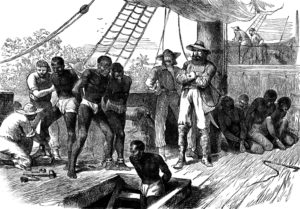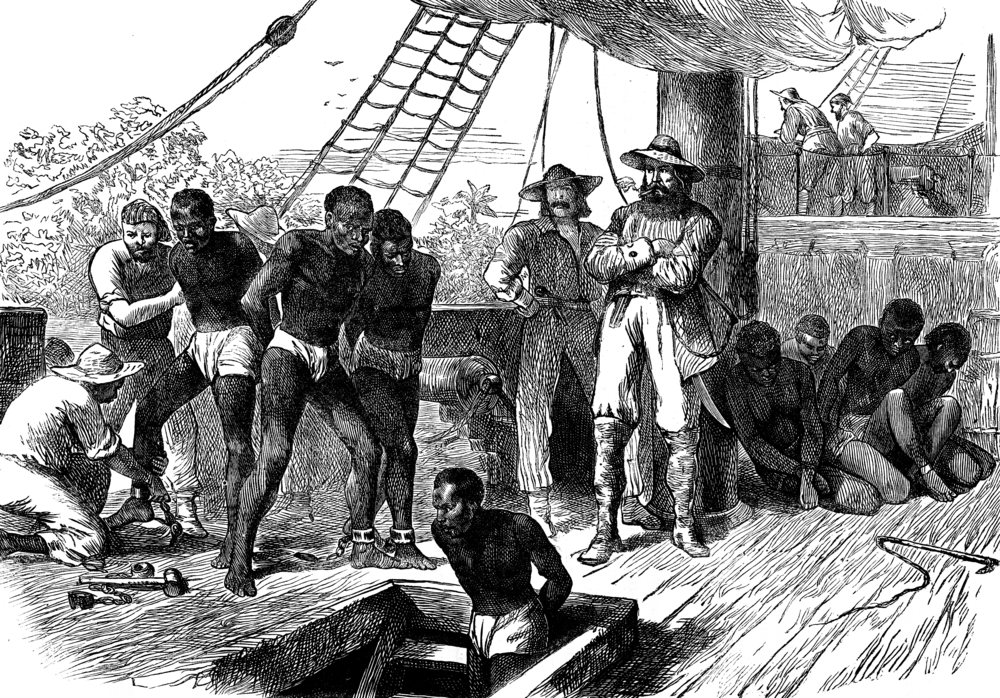
Last week, I posted on Jeff Hummel’s article “U.S. Slavery and Economic Thought” in David R. Henderson, ed., The Concise Encyclopedia of Economics. Many commenters posted their thoughts on the article. One of the things I love is when people go back to the longer article behind the blog post rather than settling for the teasers that I quote. One commenter, Warren Platts, did so and quoted this segment from the article:
One confirmation of slavery’s output inefficiency is the post-Civil War’s significant decline in southern output and income per capita. The real value of total commodity output (agriculture, manufacturing, and mining) in the eleven defeated Confederate states did not return to its 1860 level until nearly two decades later and, since population had also risen, real output per person in 1880 was almost 20 percent below prewar levels.
Platts then wrote:
This doesn’t make sense to me. Maybe someone can explain it. It seems to me that an economy with a relatively high productivity is an efficient economy. And productivity is commonly measured in real output per person. Thus, how can an economy whose real output per person be 20% lower than it was 20 years previous be considered a more efficient economy?
Jeff Hummel sent me an answer that he thought was too long to be a comment. My problem with it, though, was that it was too good to be just a comment. It deserved a place as a standalone post. Here is Jeff’s answer:
To be clear, I am not claiming that the post-Civil War South was necessarily “a more efficient economy” in all respects. Despite the increase in efficiency (welfare) brought about by slavery’s abolition (with its accompanying fall in output), other postwar factors not directly related to emancipation were also affecting the real income and/or efficiency of the southern economy overall. The demand for U.S. cotton had softened because Great Britain and other importers had shifted their purchases during the war to India, Brazil, and Egypt. The South did not recover its market share until the 1880s while at the same time world cotton consumption was growing at half its prewar rate.
The wartime Republican administrations had hiked tariffs to protectionist levels, ending the prewar policy of relatively free trade, and the burden of these tariffs inevitably fell disproportionately on the South’s exporting economy. The tariff was also the national government’s main source of revenue. Yet residents of the former Confederate states rarely if ever received two of the largest government’s postwar expenditures partly financed by the tariff: interest on plus payment of the wartime debt and veterans benefits. The new Reconstruction governments in the South, despite all the benefits they provided to the former slaves, also made extravagant new expenditures on railroad subsidies, public education, and other social services, requiring some of the heaviest state and local taxation in proportion to wealth up until that time in U.S. history.
Emancipation did undermine the South’s financial sector, given that, prior to the war, slaves had been a major form of collateral. Nonetheless, a new well-developed financial system might have emerged if not for war-induced changes in the nation’s monetary and banking legislation. The new National Banking System openly discriminated against the South, prohibited nationally chartered banks from making real-estate loans, and deprived state-chartered banks in the South, as elsewhere, from issuing banknotes. Preexisting restrictions on branch banking, plus the fact that national banks had to match their note issue to an ever shrinking supply of Treasury securities, inhibited shifting credit to areas where interest rates were highest.
State-chartered banks could still issue deposits, but the nineteenth-century was a period when checking accounts were confined to individuals of recognized wealth or unquestioned probity. The poor or undistinguished were thus confined to cash. But the denominations of national bank notes could not be smaller than one dollar (despite wartime inflation, equivalent to $18 in 2022); the circulation of Greenbacks, available in lower denominations, was being contracted; and a mint ratio that favored large denomination gold coins combined with the melting down of silver coins during the wartime inflation had caused the prewar supply of silver coins to dwindle by two-thirds. All this occurred during a period of deflation, in which the purchasing power of each dollar was continually rising.
The net effect of all these factors was to starve the postwar South of credit and small-denomination cash, at the very moment the South’s monetary needs had expanded. The slave plantation had been a mini-planned economy, within which resources were allocated at the planter’s discretion. Upon emancipation, most slaves for the first time had to purchase many of their necessities. Meanwhile interest rates in the rural South soared to five times their prewar levels. Is it any surprise that southern agriculture was reduced to essentially barter transactions? Sharecropping, after all, involves cotton or other products exchanged for the use of land. And the almost exclusive source of rural credit was small country stores, that advanced food, clothing, and agricultural supplies with crops pledged as security.
Incidentally, in reading Jeff’s response, I was reminded that he had covered a number of these issues in his Masters in Monetary Theory class at San Jose State University that I took on Zoom from January to May, 2021.


READER COMMENTS
Jon Murphy
Jan 3 2023 at 10:21am
Fascinating read. Am I right in assuming that some of the banking regulations discussed were imposed to punish the Southern states for the rebellion? If so, it looks like another case of massive unintended consequences: the sanctions meant to punish the rebellious governments and citizens actually fell hardest on the newly-freed slaves, the very group the war was intended to help!
Jeff Hummel
Jan 4 2023 at 6:00pm
The features of the National Banking System that discriminated against the South included high capital requirements for national bank charters, the Comptroller of the Currency’s restrictions on entry, and initial ceilings on the total number of bank notes that the Comptroller ended up allocating regionally at his discretion. The motivations for these features were mainly a desire to ensure the solvency of national banks, the (ultimately unsuccessful) goal of eliminating state chartered banks entirely by getting them all to convert to national charters, and the political pressure from New York banks to dominate the system. I know of no evidence of an explicit desire to punish the South. Indeed, these features impinged on the rural South more than the urban South and also to less extent on the rural West.
Jon Murphy
Jan 4 2023 at 6:55pm
Thanks for the additional insight!
Philo
Jan 3 2023 at 2:33pm
Hummel’s essay is very informative, but I do not see that it answers Warren Platt’s question. How does the South’s post-war economic performance show, or even suggest, that slavery was inefficient?
David Henderson
Jan 3 2023 at 4:29pm
That wasn’t his question.
Warren asked:
Jeff did answer this question. It’s not more efficient. Overall, because of all the regulations, it’s probably less efficient. But getting rid of slavery made it more efficient than otherwise.
gwern
Jan 3 2023 at 8:03pm
No, Jeff still hasn’t actually answered the question. What Jeff did was admit that there was no logical connection between ‘-20%’ and ‘slavery was inefficient’; there’s no obvious reason one implies the other, the original text is just a sheer non sequitur, with his actual extremely non-obvious argument left out entirely. His actual argument is, ‘yes, the -20% is evidence that slavery was inefficient, however there are extenuating circumstances A/B/C and my belief [for which no evidence is presented in the posted comment] is that counterfactually those extenuating circumstances A/B/C would have caused a >-20% fall [by some unspecified X%] in a slavery-based economy and this mysterious X% residual I attribute to the greater efficiency of a non-slavery-based economy’.
The list of reasons A/B/C is interesting and some things I did not know; but he doesn’t give any reason to believe that all of those factors would obviously create a, I dunno, -30% fall rather than a -10% fall, and so obviously a mere -20% fall is evidence for slavery’s inefficiency. So his original writing was bad (maybe the editor cut out some parenthetical remarks?) and his answer, while interesting, does not explicitly answer Warren’s question nor does it convincingly support his core claim about the slavery counterfactual economy doing much worse than the observed non-slavery economy. Yeah, all that stuff is bad, we can agree on that, but yhy should I believe that -20% is so small that it must be thanks to ending slavery that the South had a ‘soft landing’? Why couldn’t I believe that the real counterfactual is -10% and then the extra -10% is due to losing the efficiency of slavery? (Considering how shaky everything is in macroeconomics and how poor economics statistics are that far back, especially in unique singular cases, this seems like demanding a level of quantitative precision and causal inference far beyond what is possible…)
Jeff Hummel
Jan 4 2023 at 8:11pm
Warren Platts’s comment ended its quotation of my slavery entry with my statement about the 20 percent fall in southern real output per person as of 1880. He did not include my sentences immediately following:
Despite some economic historians offering additional explanations for the South’s output decline, most have accepted and none, to my knowledge, has challenged, the decline in the labor input. Surely you must agree that if people work less, other things equal, they produce less.
But of course other things weren’t equal in the defeated South, which was the point of my reply to Platts. Parsing out the relative importance of these various factors is imprecise, and I made no effort to do so. But the fact that the decline in the labor input was far from trivial is suggested by another sentence in my entry’s next paragraph:
Perhaps you are objecting to my claiming that this fall in output actually constituted an increase in efficiency, however it may have been offset by what else was going on elsewhere in the southern economy. In that case, I refer you to my entry’s discussion of the difference between productivity and efficiency. The standard economic practice is to treat efficiency as a welfare measure. Plantation slavery forced slaves to worker longer and/or harder than they otherwise would have chosen. Emancipation therefore brought about an increase in welfare despite its negative effect on productivity.
Comments are closed.